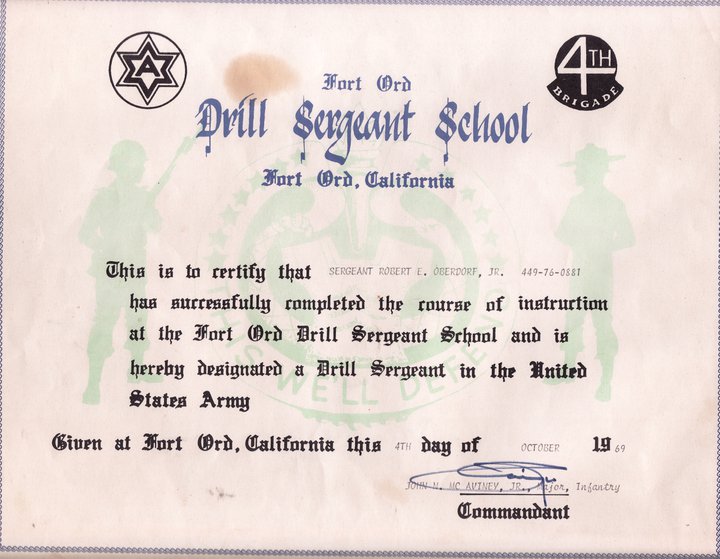
"I Grew Up Fast"
SSG DJ McFee
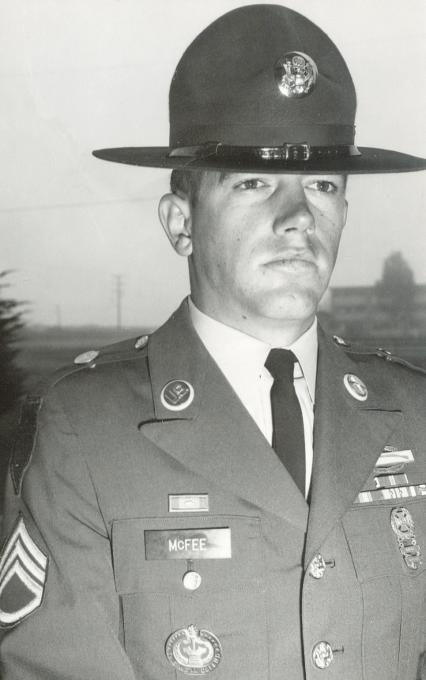 SSG McFee took both BCT and AIT at Ft Ord in 1966. He served in Germany for two years and then served one tour of duty in Vietnam, before returning to Fort Ord to attend DI School in 1969. In reflecting back on his taking the extra training and the demands expected of him. SSG McFee said, "Coming back from Vietnam I was in no mood to put up with all the spit and polish needed for pushing troops. But once I was there I saw the need, challenge and the responsibility of the position. Most of these guys I would be training would be heading to Nam, and I felt I could pass on some knowledge that might make a difference....." It is with SSG McFee's personal assistance and material contributions that helped bring this page to fruition.
SSG McFee took both BCT and AIT at Ft Ord in 1966. He served in Germany for two years and then served one tour of duty in Vietnam, before returning to Fort Ord to attend DI School in 1969. In reflecting back on his taking the extra training and the demands expected of him. SSG McFee said, "Coming back from Vietnam I was in no mood to put up with all the spit and polish needed for pushing troops. But once I was there I saw the need, challenge and the responsibility of the position. Most of these guys I would be training would be heading to Nam, and I felt I could pass on some knowledge that might make a difference....." It is with SSG McFee's personal assistance and material contributions that helped bring this page to fruition.
DSS - BCT
Chief Instructor
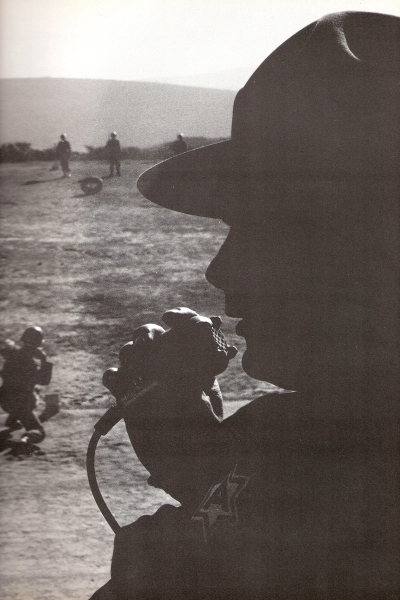 "And If They Can't Hack It, I Burn 'Em Away"
"And If They Can't Hack It, I Burn 'Em Away"
A quote from MSG Walter E. Jackson, Chief Instructor of the Drill Sergeant School (DSS), Fort Ord, California had been in the profession of "pushin' trainees" for a long time; at Fort Ord in a Basic Combat Training (BCT) outfit, just one of many instructors who trained and motivated some of the Army's finest combat veterans into first class Drill Sergeant instructors.
Six Week Course
DS Candidates
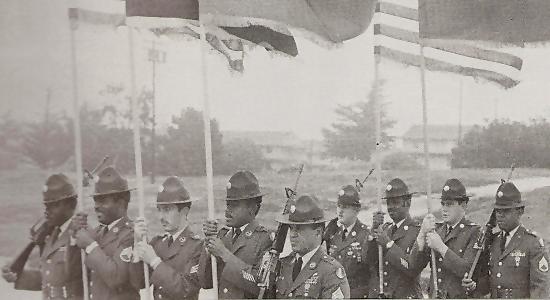 Candidates selected from E-4 through E-7 personnel at the fort, went through an intensive six weeks of training. A new class usually of about 30 men, started every three weeks. Altogether, more than 2,000 drill sergeants graduated from the school. Most of the candidates wore the Combat Infantryman Badge and were either combat arms NCOs or specialists. For at least a year after graduating, they wore their hat in the Fort Ord BCT battalions.
Candidates selected from E-4 through E-7 personnel at the fort, went through an intensive six weeks of training. A new class usually of about 30 men, started every three weeks. Altogether, more than 2,000 drill sergeants graduated from the school. Most of the candidates wore the Combat Infantryman Badge and were either combat arms NCOs or specialists. For at least a year after graduating, they wore their hat in the Fort Ord BCT battalions.
Techniques Of Instruction
Drill and Ceremony
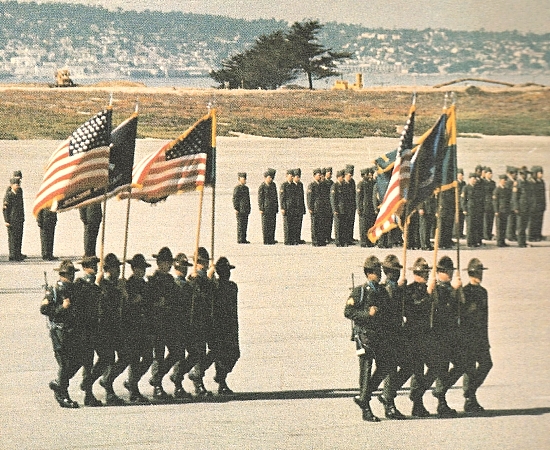 There was a 35 percent wash out rate. Most failed either the PT or one of the academic test. They were allowed to return after 60 days if they expressed an assurance that they wanted to try it again. Candidates trained in every phase of BCT. Considerable time was spent in leadership courses. One of the more difficult courses for the trainees. Learning to speak confidently in front of a group of citizen trainees. This included the Techniques of Military Instruction and Drill and Ceremony procedures. Both subjects being a new area of learning for the DI trainees.
There was a 35 percent wash out rate. Most failed either the PT or one of the academic test. They were allowed to return after 60 days if they expressed an assurance that they wanted to try it again. Candidates trained in every phase of BCT. Considerable time was spent in leadership courses. One of the more difficult courses for the trainees. Learning to speak confidently in front of a group of citizen trainees. This included the Techniques of Military Instruction and Drill and Ceremony procedures. Both subjects being a new area of learning for the DI trainees.
Equipment Training
M-16 Beach Range
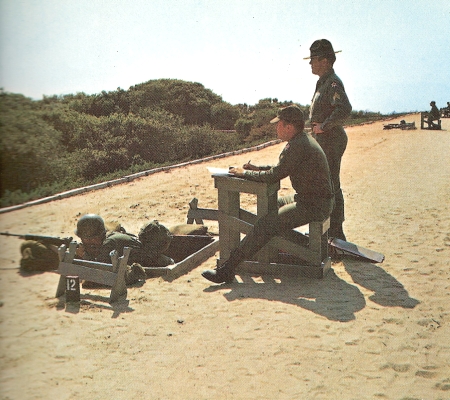 All the training was in two parts. A review of what they learned in BCT and how to teach that learning to others. Out on the "Beach Range Road" where Fort Ord's short distance rifle ranges were spread out among the sand dunes bordering the blue Pacific, the candidates requalified with an M-16 while, at the same time, they learn to analyze targets and adjust sites so that, in turn, they can show the trainees. On the floor of an old maintaince garage there were six prearranged, pregigged stations with a dummy in uniform, standing at attention in front of a bunk with full field gear laid out. Including wall and foot lockers in open display, there were some 70 gigs imbedded in the display. To pass the the test, each candidate must have spotted at least 45 of them. Some of the candidates actually failed due to a lack of ability to talk to a dummy.
All the training was in two parts. A review of what they learned in BCT and how to teach that learning to others. Out on the "Beach Range Road" where Fort Ord's short distance rifle ranges were spread out among the sand dunes bordering the blue Pacific, the candidates requalified with an M-16 while, at the same time, they learn to analyze targets and adjust sites so that, in turn, they can show the trainees. On the floor of an old maintaince garage there were six prearranged, pregigged stations with a dummy in uniform, standing at attention in front of a bunk with full field gear laid out. Including wall and foot lockers in open display, there were some 70 gigs imbedded in the display. To pass the the test, each candidate must have spotted at least 45 of them. Some of the candidates actually failed due to a lack of ability to talk to a dummy.
Leadership Instruction
Leader-Subordinate Class
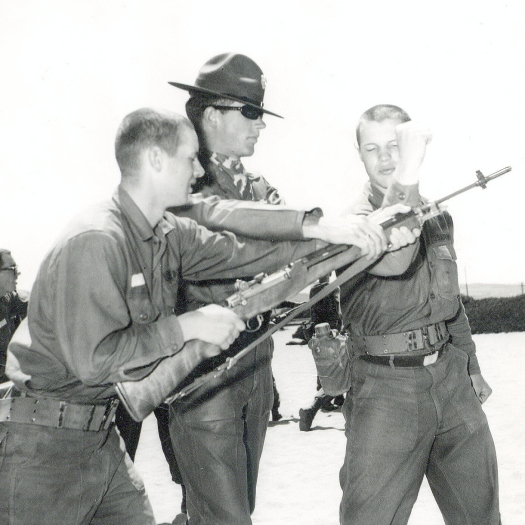 The drill sergeant would be dealing with individuals who had to be molded from civilians to soldiers. So the Dill Sergeants learned how to cope with leadership problems. He learned how to handle the troops and their particular personalities. Dealing with arguing and gambling were covered. Characteristics of leadership and how to recognize and develop potential leaders was another topic. Military psychology is designed to help the leader and to assist him in understanding not only his men but himself as well. Candidates are made aware of the possible psychiatric problems and emotional instabilities buried within fears and behind the faces of the uncoordinated and slow-to-learn. In small groups the Drill Sergeants discuss the problems they may encounter and tried to arrive at the best possible solutions.
The drill sergeant would be dealing with individuals who had to be molded from civilians to soldiers. So the Dill Sergeants learned how to cope with leadership problems. He learned how to handle the troops and their particular personalities. Dealing with arguing and gambling were covered. Characteristics of leadership and how to recognize and develop potential leaders was another topic. Military psychology is designed to help the leader and to assist him in understanding not only his men but himself as well. Candidates are made aware of the possible psychiatric problems and emotional instabilities buried within fears and behind the faces of the uncoordinated and slow-to-learn. In small groups the Drill Sergeants discuss the problems they may encounter and tried to arrive at the best possible solutions.
DSS Graduation
Drill Instuctor
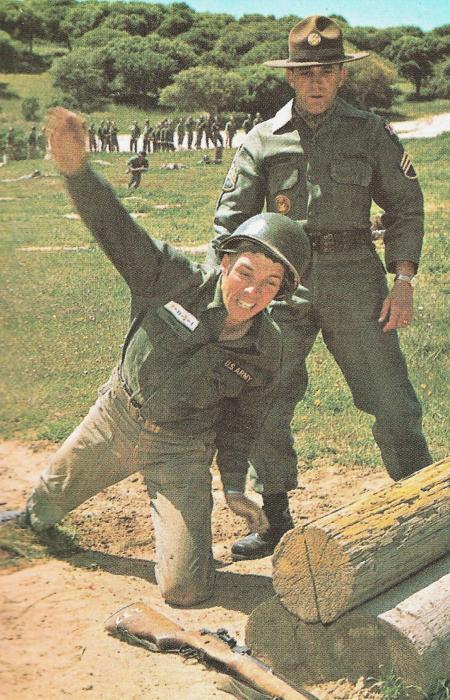 The instruction was geared to enlarge the drill sergeant's insights into human actions, and to help him understand the capabilities and limitations of his trainees, and come to realize through his instruction, how far one can be pushed. When the candidate graduates from the Drill Sergeant School and dons his new hat, he was expected to be a master of all those things and what it took to turn a civilian into a soldier.
The instruction was geared to enlarge the drill sergeant's insights into human actions, and to help him understand the capabilities and limitations of his trainees, and come to realize through his instruction, how far one can be pushed. When the candidate graduates from the Drill Sergeant School and dons his new hat, he was expected to be a master of all those things and what it took to turn a civilian into a soldier.
